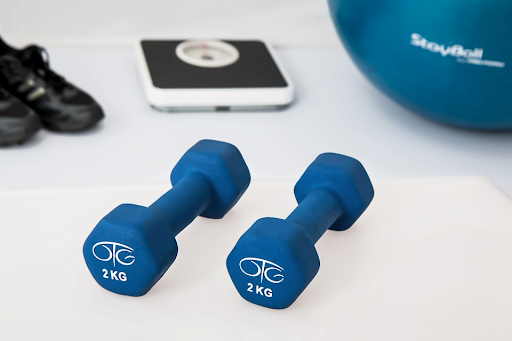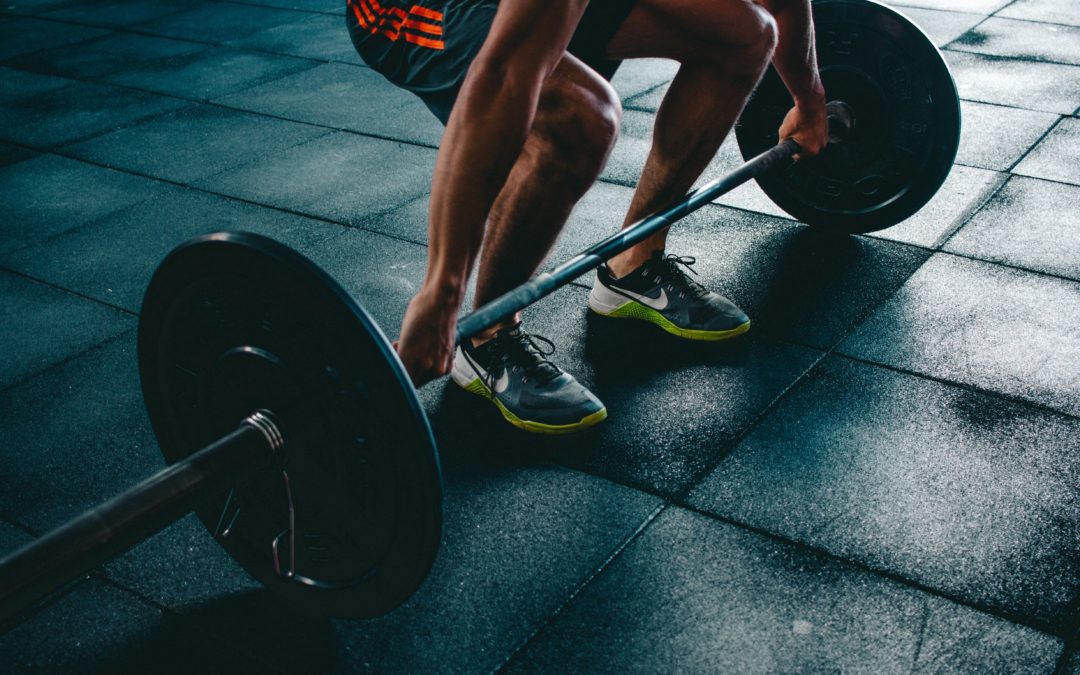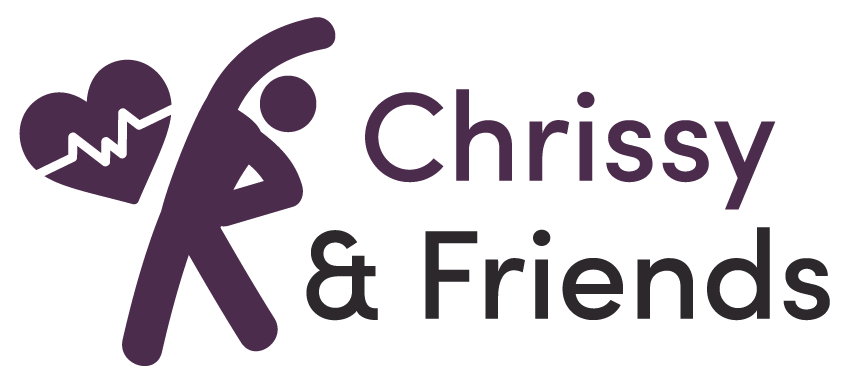by chrissyandfriends-org | Jul 26, 2024 | Uncategorized
As we venture further into 2024, technological advancements continue to reshape industries, offering new avenues for growth and innovation. Businesses that stay ahead of these trends will be better positioned to navigate the evolving digital landscape. Below, we explore the most influential technology trends that are set to define the year and how companies can leverage these innovations to stay competitive.
1. Artificial Intelligence and Automation
Artificial Intelligence (AI) is no longer a futuristic concept—it’s a present-day reality transforming industries across the board. In 2024, AI and automation will become even more ingrained in business processes, from customer service to supply chain management. Companies are increasingly adopting AI-driven tools to automate routine tasks, optimize operations, and improve decision-making.
For example, AI can analyze vast datasets to identify patterns and trends, helping businesses make more informed decisions faster. Automation, meanwhile, can handle repetitive tasks such as data entry or customer queries, freeing up human employees to focus on more complex and strategic work. The integration of AI and automation will enable businesses to operate more efficiently, reduce costs, and enhance customer experiences.
2. The Proliferation of 5G
The rollout of 5G networks continues to gain momentum, and in 2024, we will see even more widespread adoption. 5G technology promises faster internet speeds, lower latency, and more reliable connections, which will open up new possibilities for businesses.
With 5G, companies can fully leverage emerging technologies such as the Internet of Things (IoT), augmented reality (AR), and virtual reality (VR). These technologies depend on high-speed, low-latency connections to function effectively. For businesses, this means enhanced remote work capabilities, improved real-time data processing, and the ability to create more immersive and interactive customer experiences.
3. Growth of the Internet of Things (IoT)
The Internet of Things (IoT) continues to expand rapidly, connecting more devices and systems than ever before. By 2024, businesses across various industries will increasingly rely on IoT to monitor operations, streamline processes, and gather real-time data.
In manufacturing, IoT devices can track machinery performance and predict maintenance needs, reducing downtime and enhancing productivity. In retail, smart sensors can analyze foot traffic and customer behavior, enabling stores to optimize layouts and product placements. The healthcare industry is also benefiting from IoT, with wearable devices monitoring patient health and providing valuable data to medical professionals.
The key to successful IoT implementation is ensuring that the data collected is secure and actionable. Companies must invest in robust IT infrastructure and security measures to protect sensitive information and fully capitalize on the benefits of IoT.
4. Hybrid Cloud and Edge Computing
Cloud computing has long been a critical component of business IT strategy, but in 2024, the focus is shifting toward hybrid cloud and edge computing solutions. Hybrid cloud environments combine public and private clouds with on-premises infrastructure, offering businesses greater flexibility and control.
Edge computing, on the other hand, involves processing data closer to the source—such as IoT devices or local servers—rather than relying solely on centralized data centers. This reduces latency and improves the performance of applications that require real-time processing, such as autonomous vehicles or smart city technologies.
By adopting hybrid cloud and edge computing strategies, businesses can optimize their IT resources, improve data security, and ensure they are equipped to handle the increasing demands of digital transformation. Companies can also benefit from the expertise of IT service providers like Outsource Solutions Group to navigate the complexities of hybrid cloud solutions and ensure seamless integration with their existing infrastructure.
5. Focus on Cybersecurity and Data Privacy
As businesses become more digital, the need for robust cybersecurity measures has never been greater. In 2024, we can expect a continued emphasis on protecting sensitive data from cyber threats and ensuring compliance with increasingly stringent data privacy regulations.
Cybersecurity strategies are evolving to include more advanced threat detection and response capabilities, often powered by AI. Companies are also adopting zero-trust security models, which require verification for every user or device attempting to access the network. This approach minimizes the risk of unauthorized access and data breaches.
Data privacy is another critical concern, with regulations like GDPR and CCPA setting high standards for how companies must handle personal information. Businesses must ensure that their data management practices are compliant with these regulations to avoid legal and reputational risks.
Conclusion
The technology trends of 2024 present both opportunities and challenges for businesses. By embracing innovations such as AI, 5G, IoT, hybrid cloud, and advanced cybersecurity measures, companies can enhance their operations, improve customer experiences, and secure a competitive edge in the market.
Navigating these technological advancements requires a solid IT foundation and the right expertise. Partnering with a trusted IT service provider can help businesses implement these technologies effectively, ensuring they are well-prepared for the future of work and commerce.

by chrissyandfriends-org | Jan 8, 2019 | Uncategorized
The distinction between physiotherapy and physical therapy has been quite confusing in healthcare practice. Occasionally, they have been used to mean the same thing for various reasons. While there exists a thin line of differentiation between the two, it is appropriate that this gets clear. Witty practitioners for commercial gains have fueled the confusion. As the patient, it is essential to distinguish the two since this will inform decision making on the kind of therapy to seek as per your condition.
Is there a difference between physiotherapy and physical therapy?
The two terms have been used as similar for a long time. The trend is extending even to medical professionals. The two allied health entities serve the same purpose of maintaining a healthy lifestyle focusing on preventive care. One fact for sure is that they are slightly different in various aspects. Sometimes the differences are a factor of geography and socioeconomic status. In an ideal healthcare system, the differences are more vivid courtesy of advisory regulatory bodies in place.
These forms of alternative/complementary care have gained significant use in the management of chronic illness, injuries and associated pain as well as incurable diseases. Besides, they get recommended as an integrative approach in managing lifestyle diseases.
Physiotherapy applies extensive scientific knowledge about physiology to restore physical wellness in people suffering from injuries, severe pains and sometimes disabilities. Often, manual therapy is in the mix during treatment and is usually regarded as a rehabilitative modality.
On the other hand, physical therapy is a holistic approach involving a combination of actions to enhance physical well-being. It is an exercise based health procedure targeting specific goals. Some of the techniques applied include; exercise, massage, movement and body manipulations. There is much borrowing between the two, and sometimes you may not get a crystal clear difference between the two.
Physiotherapy vs. physical therapy

Following a keen observation and research on different literature regarding the two procedure, you can differentiate the two according to the following parameters
-
Qualification process and scope
Nothing is as precious as health, and one must get specific skills, meet given requirements for them to get certified to handle our health. Like other medical careers, there should be an elaborate education system baking the allied health workers for optimal results and treatment outcome. One has to pursue a university degree and learn the various skill to get certified as professional. To become a physiotherapist, you will undertake a five-year full-time course at an accredited university. During this period, one will learn the body anatomy, physiology, and experiment on different manipulations. The main focus is on how soft tissues affect body functions. Upon, completion, one registers as a chartered physiotherapist where regulatory bodies exist.
Physical therapy for a long time has been claimed to be an inbuilt gift that is intrinsic among a given group of people. There were several loopholes risking patients’ lives, and these prompted the need for training and regulation. At present, some higher learning institution offers part-time programs for the physical therapist to improves skills and stump ethical practice. Most of the topics overlap and this has raised questions of role duplication.
Although both works to improve health, there is a slight difference in their approach to treatment. People have now brought forward speculations that physiotherapy works focusing soft tissues. Physiotherapy is usually more centered on manual therapy. The practitioners work using their hands to improve the patients suffering alleviating agony. It is a hands-on technique. Besides, joint mobilizations and fascial release get used in physiotherapy to manage the various condition.
On the flip side, physical therapy is an exercise-based approach whereby the patients get guides on different physical techniques. The aim is to help strengthen muscles, enhance balance as well as coordination.
Physiotherapist applies three techniques; manual therapies, exercise programs, and electrotherapy techniques. These work in concert to bring relief. Also, muscle training and cardiovascular training applies. The physical therapist also uses the above therapies. However, electrotherapy modalities such as TENS decorates physiotherapy.
Currently, you may find a physical therapist use approaches described as a reserve for physiotherapist. Caution is necessary to find out that one is skilled to perform treatments using the various methods before entrusting them with our lives. Check out Healthmax Physiotherapy North York for the physiotherapy, chiropractic, RMT and various or physical therapies.
-
Target groups, the emphasis on treatment and expected outcomes
Physiotherapy is a rehabilitative therapy targeting the sick to avoid complications. Also, it enhances quick recovery to normal functions. Contrary, most people signing up for physical therapy are often of sound health. Usually, the motive is to improve the performance or prevent given illnesses. Physical therapy is a common thing among athletes. In the event of a prescription, lifestyle predisposition to diseases is commonly on the cards. The highly refined standards of living are prompting more need for proactive physical therapy in society.
While physiotherapy emphasizes restoring health, physical therapy advocates for a healthy lifestyle to prevent the occurrence of ailments. Physiotherapy focus on the patient and the specific condition thus each visit is considered unique requiring new assessment contrary to physical therapy which set off a one-time guideline that will be followed in treatment. It is a long-term project and results may require some level of patience.
-
Where to find the practitioners
The work environment is also a notable difference between the two professions. Physiotherapist and physical therapists practice in a different work environment. You will see them in the different setup as dictated by clientele. Where their work is mostly determined by the related need for such services.
While physiotherapists tend to localize in hospital-environment providing supportive care, physical therapists are well known to engage in private practice. You will find physiotherapy services integrated into public healthcare systems while most of the physical therapists are standalone private practitioners. Location of exercise is vital in determining insurance coverage. You can use some health covers to get physiotherapy services while most insurance companies don’t cover physical therapy.
Bottom line
Both physiotherapy and physical therapy are significant for various health condition management. The two should be promoted in enhancing general population health status.

by chrissyandfriends-org | Oct 23, 2018 | Uncategorized
While mild scoliosis is usually not associated with serious problems, in severe cases the condition can become a problem and even interface with breathing. Since a person suffering from scoliosis usually has an S or C shaped curve in the spine, he/she should avoid certain physical activities that can worsen the condition.
There are a lot of exercises people suffering from scoliosis can do, which help relieve pain and promote a healthier lifestyle. This post discusses the three types of exercises scoliosis-affected persons should avoid as they can worsen pain and exacerbate the condition. In any case and as a general rule of thumb, exercises to avoid with scoliosis, including mild and lumbar scoliosis includes exercises that compress the spine.
Avoid Heavy Weight Lifting With Scoliosis
Weightlifting is the number one exercise to avoid if you have scoliosis, including mild and lumbar scoliosis. That’s because patients suffering from the condition might cause their back muscles to pull and move in different directions by lifting the weight on a regular basis. Traditional weight lifting exercises would result in even more pressure on the back and ultimately cause pain. Scoliosis and deadlifts don’t go along well as a person has to hold a bar, bend and then straighten it over and over again, causing a lot of pressure repeatedly.
Squatting Is Bad For Scoliosis
Exercises such as squatting, hamstring curls and lunges can put extra pressure on an already injured back, especially standing squats. In addition to the targeted muscles, these exercises also make you work your spine. That’s why these and other lower-body exercises should be avoided if you have to squat as they are known to cause back pain in such cases. However, there are some variations of these exercises that are possible (depending on the severity) while lying down or sitting, which minimizes the pressure on your spine.
Try to Avoid Yoga Back-Bends
Although certain yoga poses can help treat scoliosis, one type of pose that can cause pain and worsen the condition is Yoga back-bends, which is among many Yoga postures that place extra pressure on the back and might cause pain. In general, any position that requires you to bend backwards should be avoided. This includes cobra, a position in which you lie down on your stomach and try to lift your chest off by bending the back.
The wheel is another Yoga posture and a scoliosis exercises to avoid as it involves lying on the back and bending over in a U-shape by pushing up the feet and hands. In fact, experts recommend seeking the advice of a professional yoga instructor before attempting any such postures to make sure they don’t worsen the condition and cause any pain.
Conclusion
Whether you are planning on squatting with mild scoliosis or doing some Yoga with lumbar scoliosis, it’s always best to seek advice from a professional before attempting anything. Anyone with scoliosis needs to be especially careful with weight-lifting, squatting, lunges, hamstring curls and Yoga backbends. These movements can worsen the pain and make the condition even worse. Life presents all of us with unique challenges, but what matters, in the end, is how we stand up against them and overcome to reach the best of our potential.

by chrissyandfriends-org | Oct 23, 2018 | Uncategorized
Scoliosis is the medical term used to describe the irregular curvature of the spine. It can vary from mild to severe cases. In some moderate situations, exercises can help reverse scoliosis along with proper care and consultant with medical Scoliosis specialists.
Doctors have yet to identify the cause of Scoliosis in most cases however it is widely believed that it can be a mixture of hereditary or environmental aspects.
Although Scoliosis only affects at most 3% of the population, it should not be taken lightly. Severe cases of Scoliosis can result in difficulty in breathing and may require bracing or spinal surgery which is very life-threatening if done incorrectly.
Different Types of Scoliosis
Scoliosis specialists or Physical therapists will most like recommend certain exercises to help the patient address the mild spine specific structural difference.
Moreover, Mild scoliosis cases do not require significant medical procedures such as braces and spinal surgery. Also, they are not as visible to the eye compared to other posture disorders. The term Mild scoliosis is generally accepted to describe the type of scoliosis where the spinal curvature is between 10 to 20 degrees. For this reason, those with mild scoliosis are the most receptive to exercise treatment.
Scoliosis cases with spine curvature between 25 to 40 degrees are considered as moderate cases.
Moderate scoliosis may be treated with exercise too along with proper medical attention. In addition, wearing braces can also be an option. Unattended, moderate scoliosis can worsen and lead to severe scoliosis. Unfortunately, Severe scoliosis, classified as spine curvature of more than 40 degrees, are the least responsive with exercise treatment and such cases usually need to be corrected with spinal surgery.
In this article, we will list some of the common exercises to help correct or at least delay the progression of Scoliosis for those having mild to moderate scoliosis:
Scoliosis Exercises to Build Core Muscle Strength
Exercises such as planks and crunches help develop core strength. This provides the abdominal part of your body in control and helps alleviate back pain caused by scoliosis.
Yoga Pose Exercises that target the Spine Structure
A lot of yoga poses help in improving your spine structure. These poses help align the body structure along with the added strength and resiliency to the back muscles. Stretching poses aligns and relaxes your spine by decompressing the bone vertebrae column.
Twisting poses forces the body to pivot backwards the spine misalignment due to scoliosis that results to the realignment and balancing of the torso. In addition, back bending poses to improve your flexibility with the added benefit of correcting the structure of the spinal column.
Back and Leg Stretching Exercises For Scoliosis
Regular stretching of the back and leg muscles alleviates discomfort caused by scoliosis. Also, a dislocated spine column has a tendency to compress nerves in the back and lower extremities that may result in severe pain. In addition, stretching greatly helps in restoring flexibility to the lower part of your body.
Pectoral and Chest Stretching Exercises
Stretching the pectoral and chest muscles is very important to correct hunched back and malformed shoulders. There are a variety of exercises including backbends and arm stretching that targets the pectoral muscles. This can be performed by such as using a platform or training buddy to stretch your upper body.
Full Body Stretch Exercises After Long Periods of Idleness
It is never good for anyone to sit or stand for an extended duration. More so for those suffering from Scoliosis. Stretching the whole body after standing or sitting for a long time aids in relieving the strain on the body and this is especially beneficial for those suffering from Scoliosis.
As a rule of thumb, stretch or take a walk as often as possible. It is also recommended to use a comfortable and ergonomic chair if you are required to sit for a long period.
Engaging in Physical Activities such as Dancing or Football
Dancers who are suffering from scoliosis do not need to be concerned. This is not a major cause for concern, however, there are certain dance moves like backflips, or bends that are prohibited to reduce the chance of aggravating scoliosis.
If you are not a fan of dancing, other physical activities like football or swimming are great alternatives that do not worsen scoliosis. They are fantastic aerobic sports that improve the core strength. Of course, All soccer positions are okay apart from being a goalkeeper since goalkeepers tend to contort their body in horrible positions.
Additional Tips for Your Scoliosis
- As mentioned above, exercise consistently to correct or delay the progression of scoliosis.
- Maintain a healthy diet with enough vitamins to help prevent aggravation of your scoliosis. Recommended vitamins include calcium and Vitamin D.
- Be careful with your height and weight proportionality to ensure you do not experience extra strain on your body especially the back side.
- As they say, early detection helps a lot. Do not wait for long periods of time before going for your regular checkups. You do not want mild scoliosis turning into a severe one.
Warnings for people with Scoliosis:
Although exercises are recommended, immediately stop when you start to feel excruciating pain and go to the doctor immediately. Do not proceed with your exercise routine in such cases otherwise, your scoliosis might end up turning for the worse. There are specialists and physical therapists that can provide you medical attention and advice on how to proceed further.
In this article, we have a brief introduction to Scoliosis and the common exercises that can correct or delay the progression of scoliosis. By being mindful of your body, you can take hold of your scoliosis condition and do exercises to transform into the scoliosis-free and better version of yourself.
Do you or anyone you know suffer from Scoliosis and can benefit reading this home exercises? If so, please like and share this article. Are there better home exercises you are doing to alleviate Scoliosis? Please leave a comment below! Thanks





